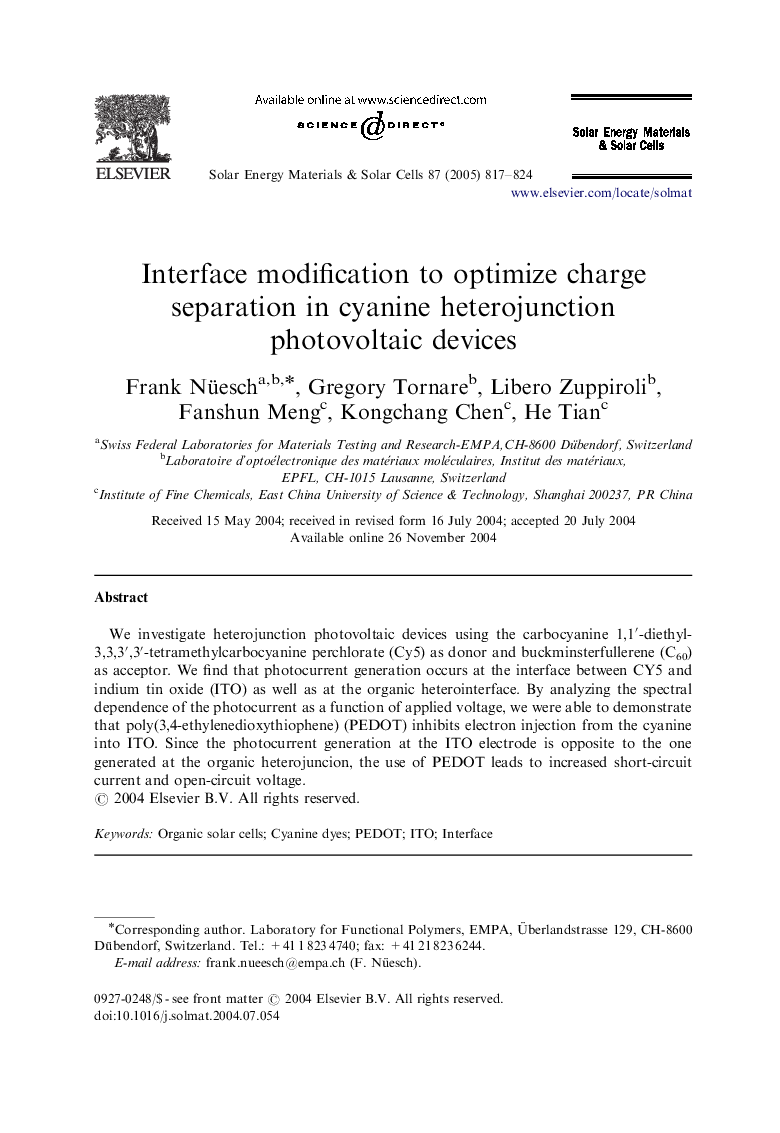| Article ID | Journal | Published Year | Pages | File Type |
|---|---|---|---|---|
| 9618725 | Solar Energy Materials and Solar Cells | 2005 | 8 Pages |
Abstract
We investigate heterojunction photovoltaic devices using the carbocyanine 1,1â²-diethyl-3,3,3â²,3â²-tetramethylcarbocyanine perchlorate (Cy5) as donor and buckminsterfullerene (C60) as acceptor. We find that photocurrent generation occurs at the interface between CY5 and indium tin oxide (ITO) as well as at the organic heterointerface. By analyzing the spectral dependence of the photocurrent as a function of applied voltage, we were able to demonstrate that poly(3,4-ethylenedioxythiophene) (PEDOT) inhibits electron injection from the cyanine into ITO. Since the photocurrent generation at the ITO electrode is opposite to the one generated at the organic heterojuncion, the use of PEDOT leads to increased short-circuit current and open-circuit voltage.
Related Topics
Physical Sciences and Engineering
Chemical Engineering
Catalysis
Authors
Frank Nüesch, Gregory Tornare, Libero Zuppiroli, Fanshun Meng, Kongchang Chen, He Tian,
